Case Study
Strava x Spotify
Cross collaboration can benefit both companies
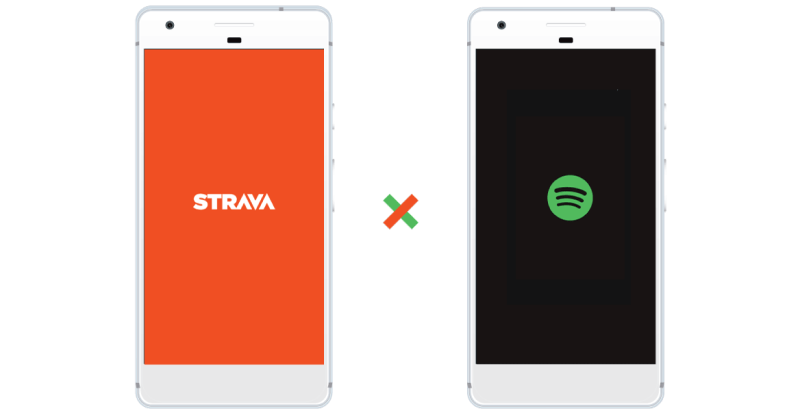
Case Study
Cross collaboration can benefit both companies

Strava is an app that tracks physical activity using distance. Whether it be cycling, running or swimming. The problem with Strava is that lacks music integration that their competitors already have. Our solution was for Strava to collaborate with Spotify, a music streaming app.
duration
3 weeks
role
UX designer
team
Mandy Cheung, Michaela Tsumura
In order to create a consistent design system with Strava’s existing brand, we did a product audit by taking screenshots of every screen then analyzing the design elements, patterns and iconology. This helped establish an understanding of the design language to refer back to while designing Strava’s new feature.

Using screenshots to see user flow and understand visual branding
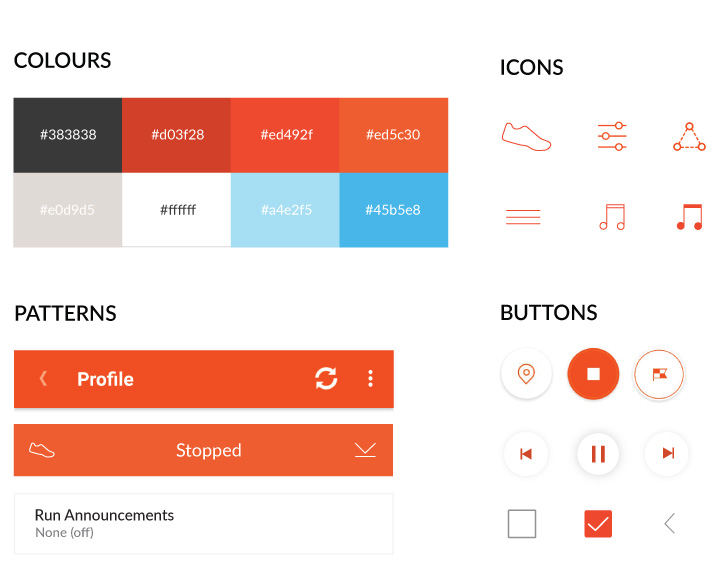
Strava's Brand Language
Using IDEO research methods to dive deeper into Strava's functionalities and user feedback
Got to know Strava better by going through the app and listing in detail all actions, tasks, objects, performers and interactions involved in a process.

Example of a process we analyzed
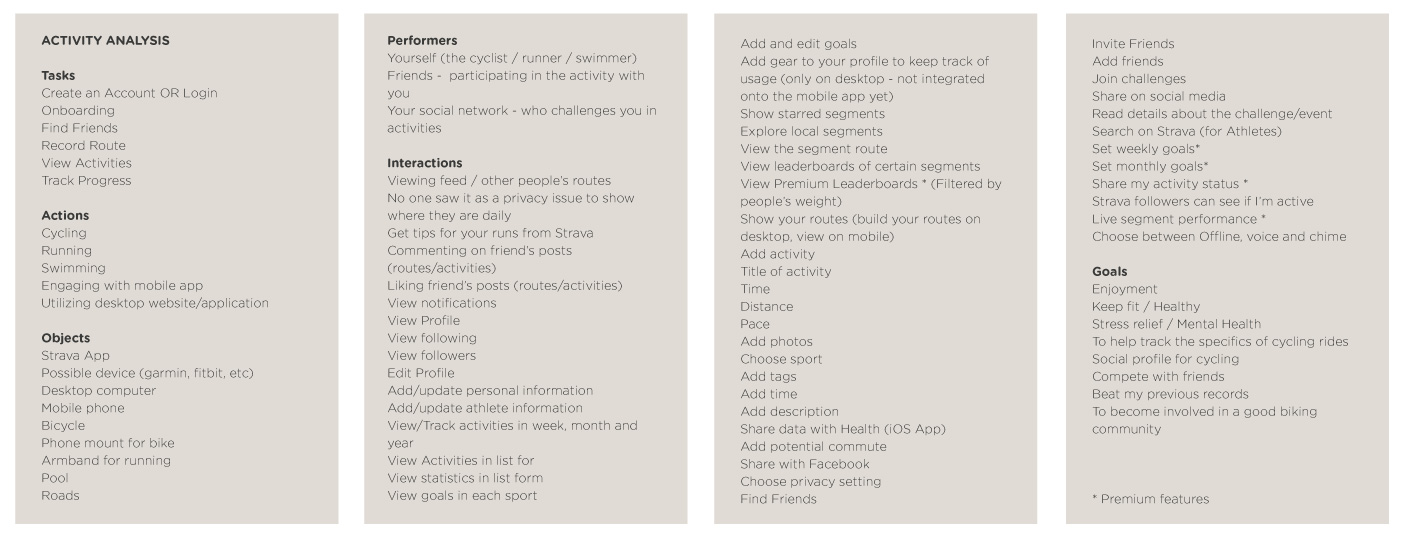
Activity Analysis
Using a questionnaire we made with Google survey, we conducted a survey with 9 people who are frequent users to find out details of users’ emotions to gauge user’s understanding and familiarity with the app and to understand how they use Strava.
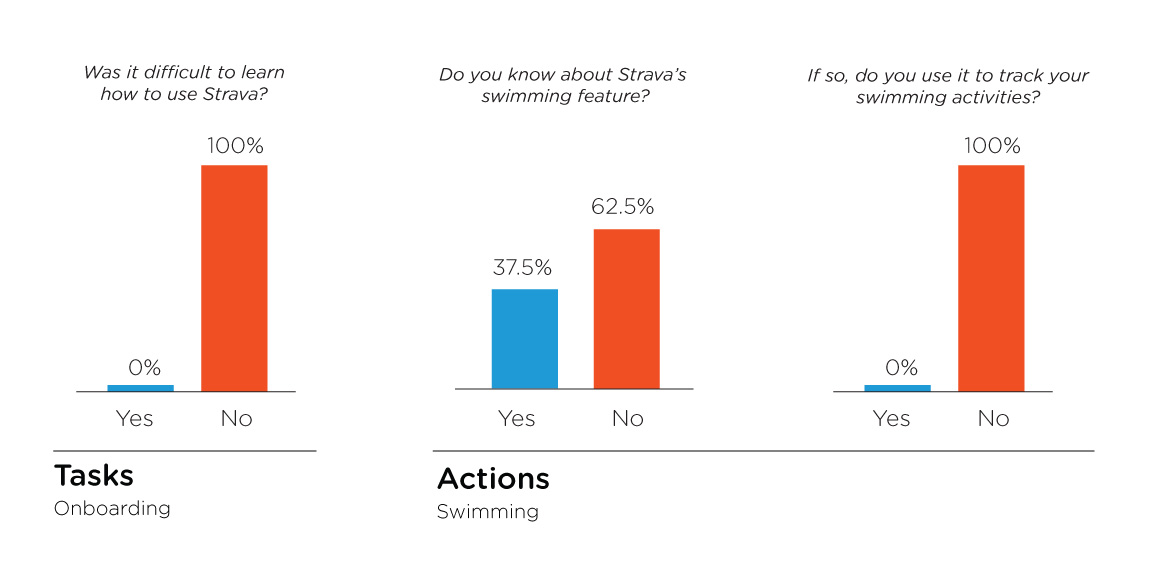
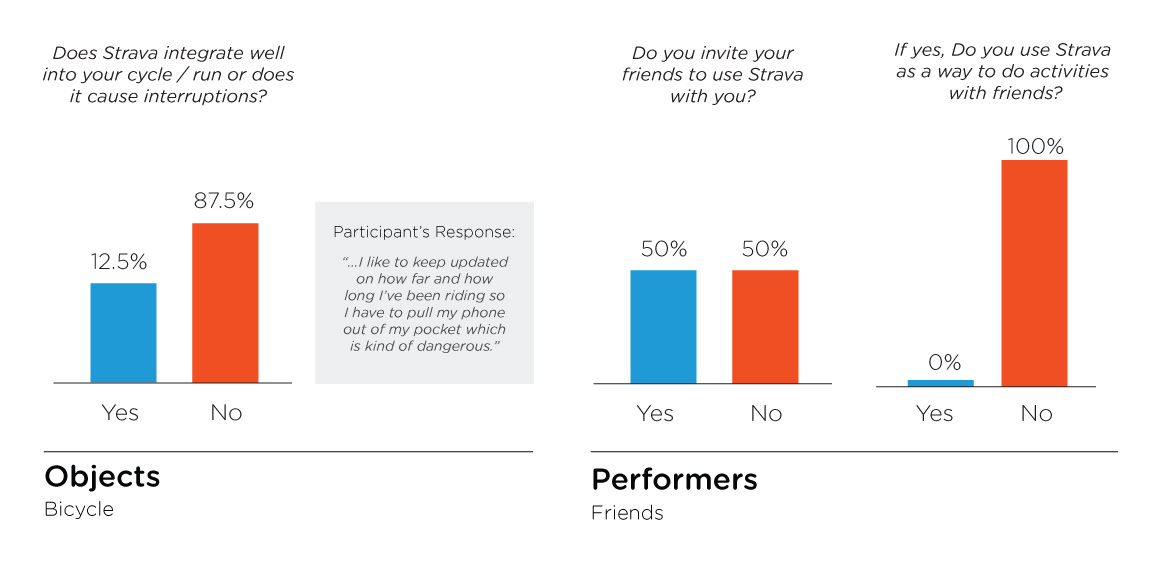
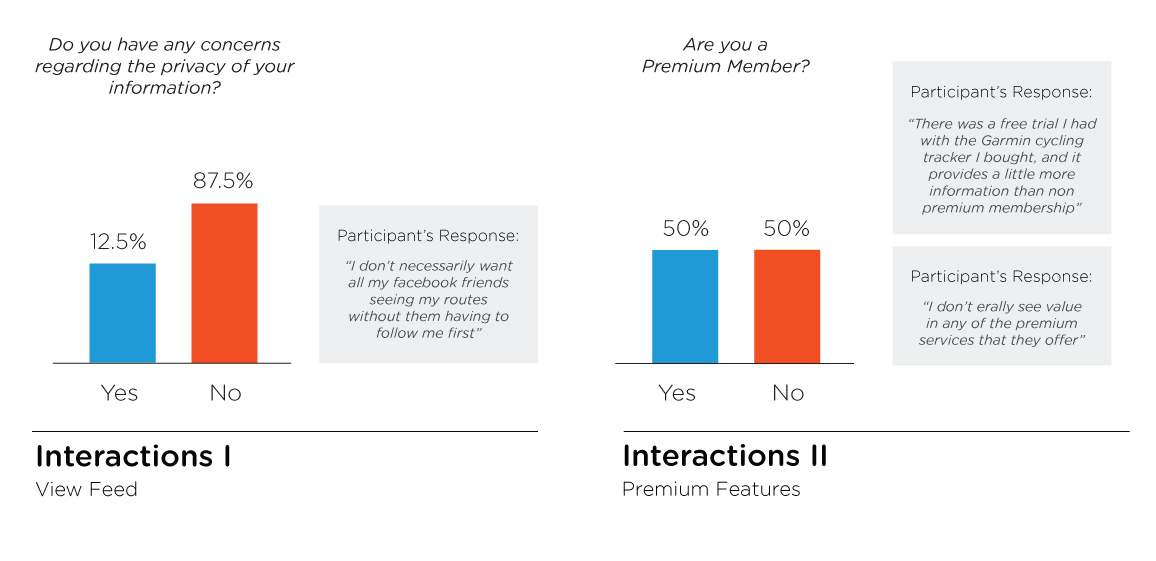
We chose to move forward with integrating a music feature because our research shows that music is an important aspect during activities for the users that we asked. Research also shows that listening to music during an activity is most effective when used in a synchronous mode. Moreover, Strava lacks a music feature that their competitors already have.
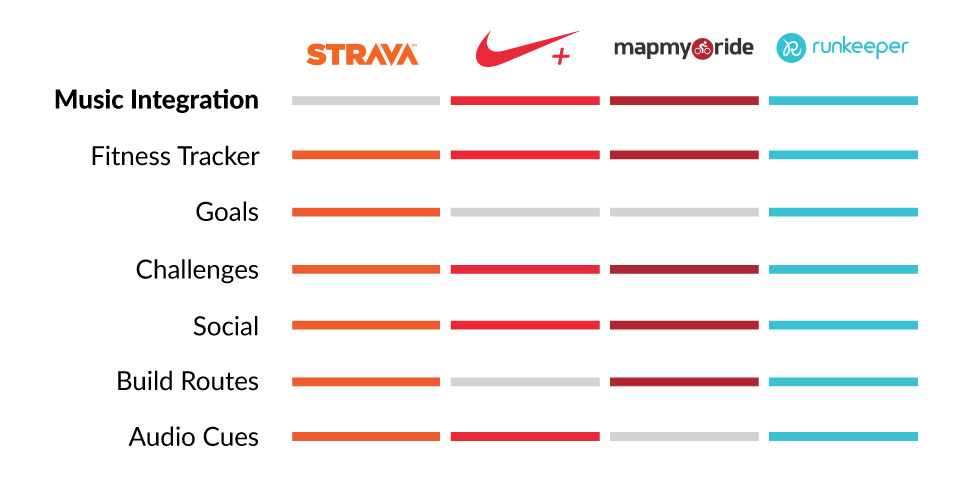
Comparison between Strava and their competitors
For Strava to integrate their own music player it may take away from the purpose of the app. Fortunately, music streaming services is the current trend; therefore, collaborating with a streaming service is ideal for Strava. We chose to collaborate with Spotify. The reason we chose Spotify is because it is available on iOS, android and has it’s own app on desktops and Macs. In addition, Spotify now has 159 million monthly active users in 2017, proving to be the most used music streaming apps in the world.
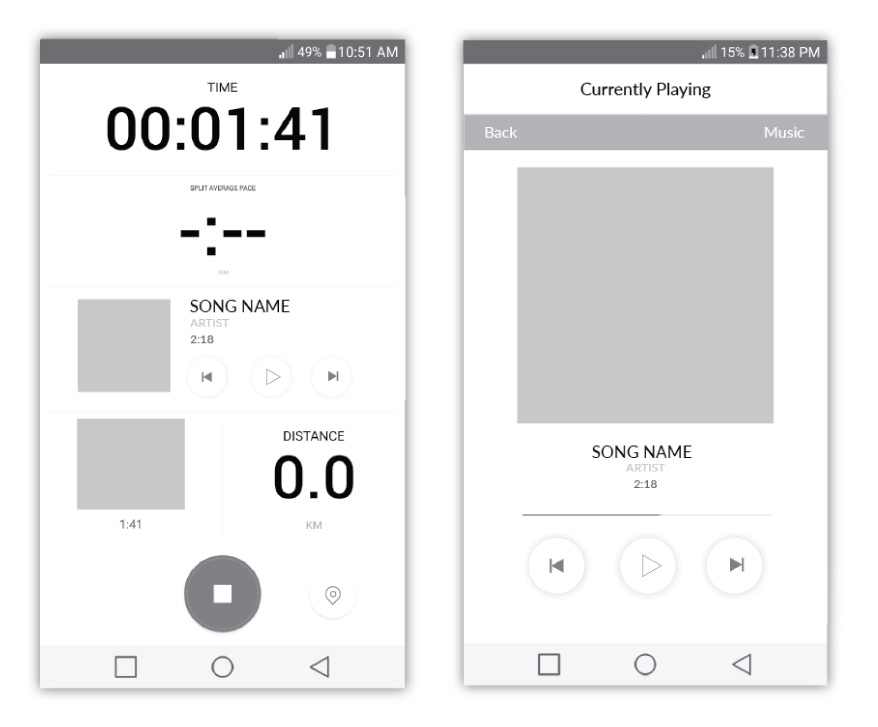
Choosing music during activity
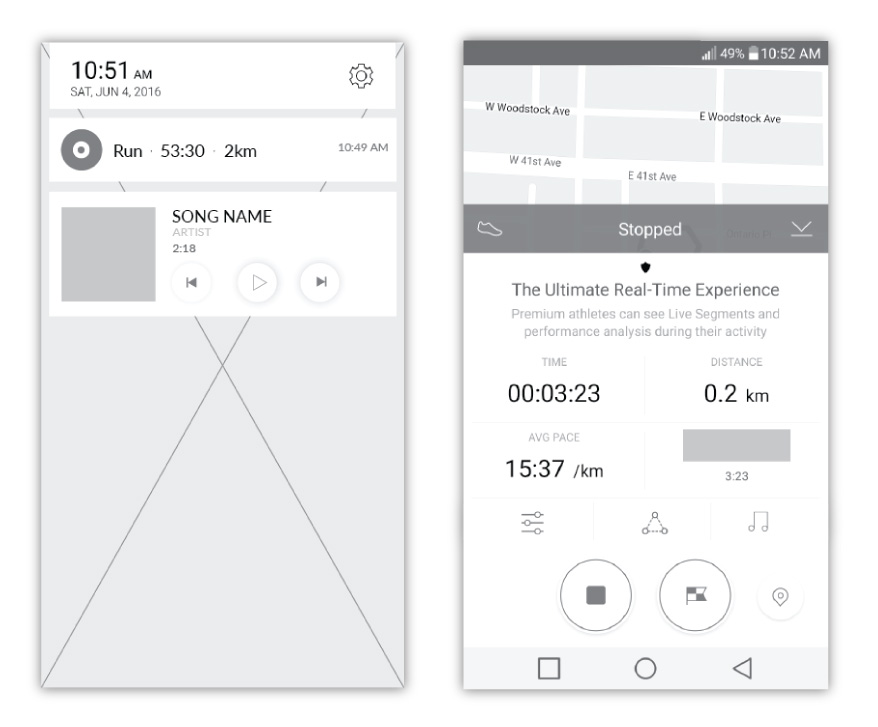
Accessing Strava from home screen / Stopping Activity
To stand out from competitors, Strava can provide users information about their performance of their run/cycle corresponding to the music they listened to. This feature allows users to curate their playlists to optimize their activity’s performance.
To seamlessly integrate Spotify into Strava, we looked at the current app to see where we can implement Spotify. The music feature is implemented in 3 areas of Strava:
1. Spotify can be access through main menu, then users are able to access their Spotify playlists.
2. Before the start of the activity, users can choose playlists to listen to during their activity.
3. At the end of the activity, users can check the stats from the run, including the correlation between the songs and users’ pace.
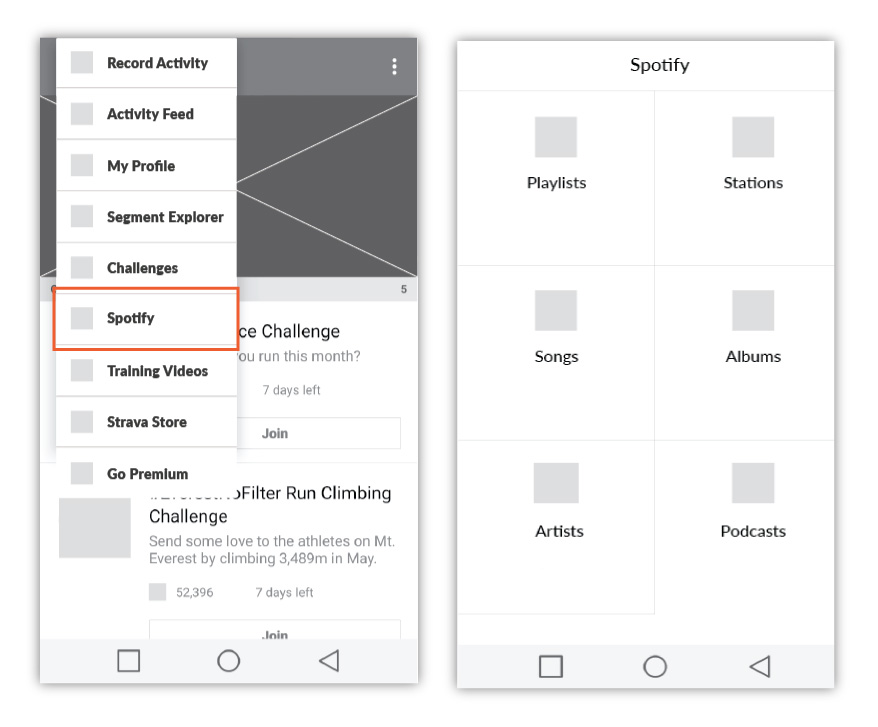
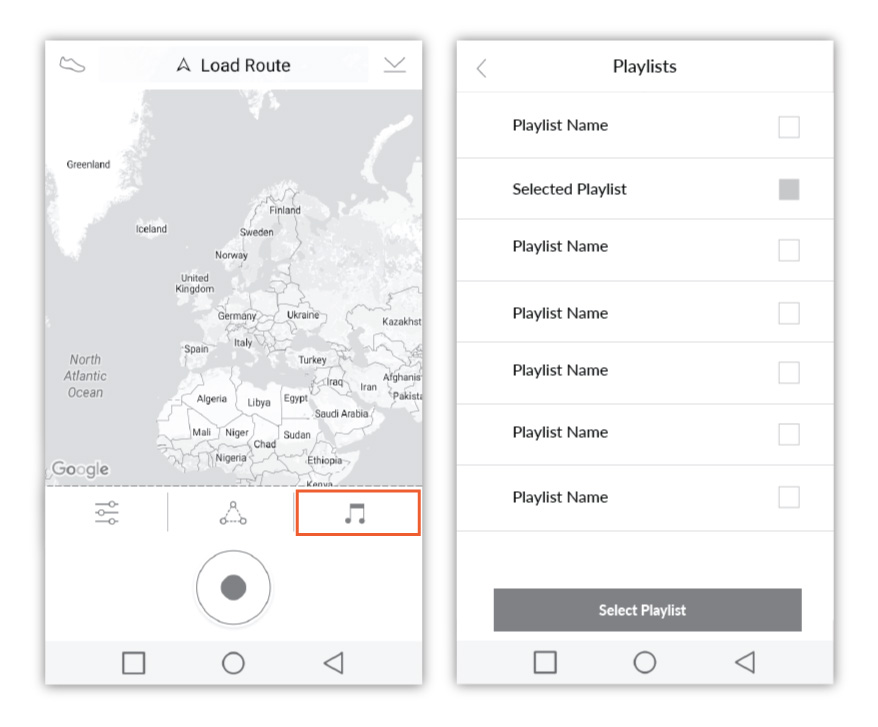
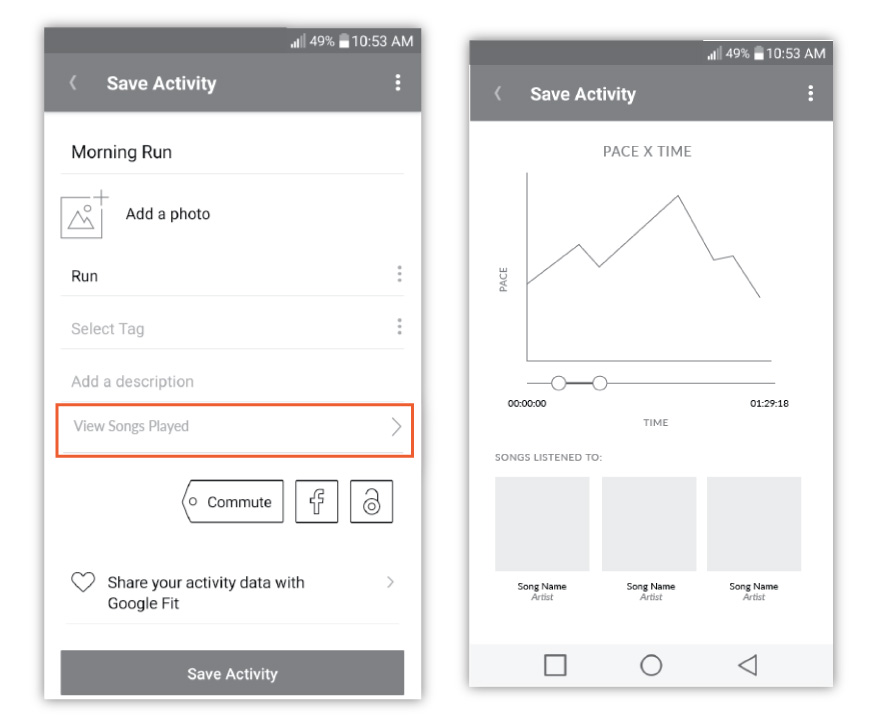
Although our goal was to not turn Strava into a music app, we unintentionally included a large portion of the app dedicated to music. When I realized this, I knew we had to rethink on the execution of the music feature.
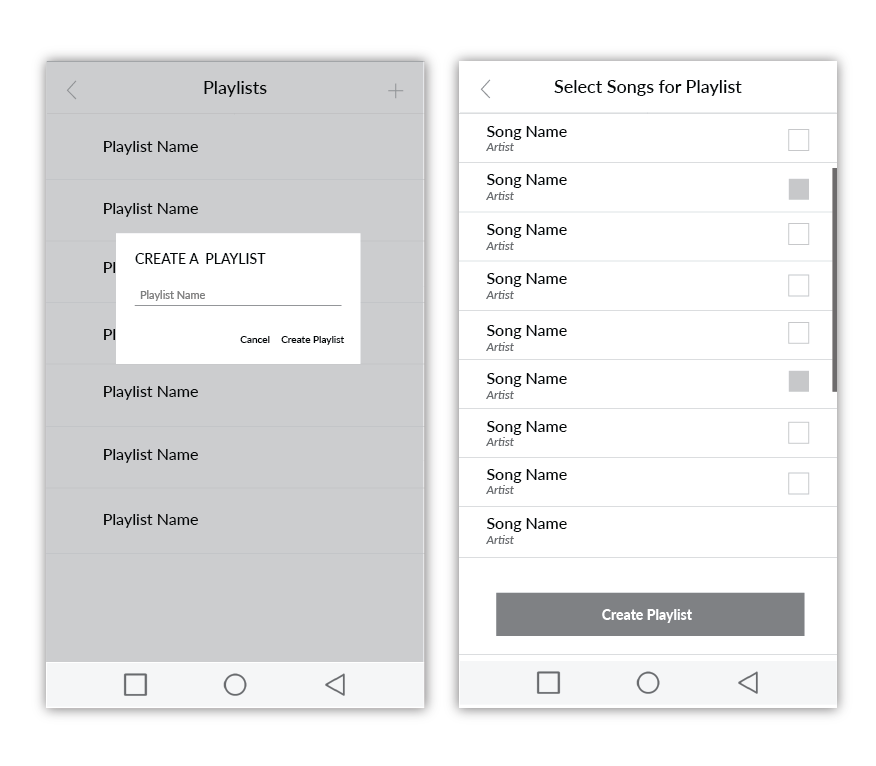
Creating playlists within Strava
The updated execution is to have users create playlists or follow stations on Spotify, then syncing them onto Strava to play during their activities. This allows Strava and Spotify to exchange data that could be useful for the user. When people first access Spotify within Strava, they will be greeted to login to Spotify to access the users' information on Spotify.
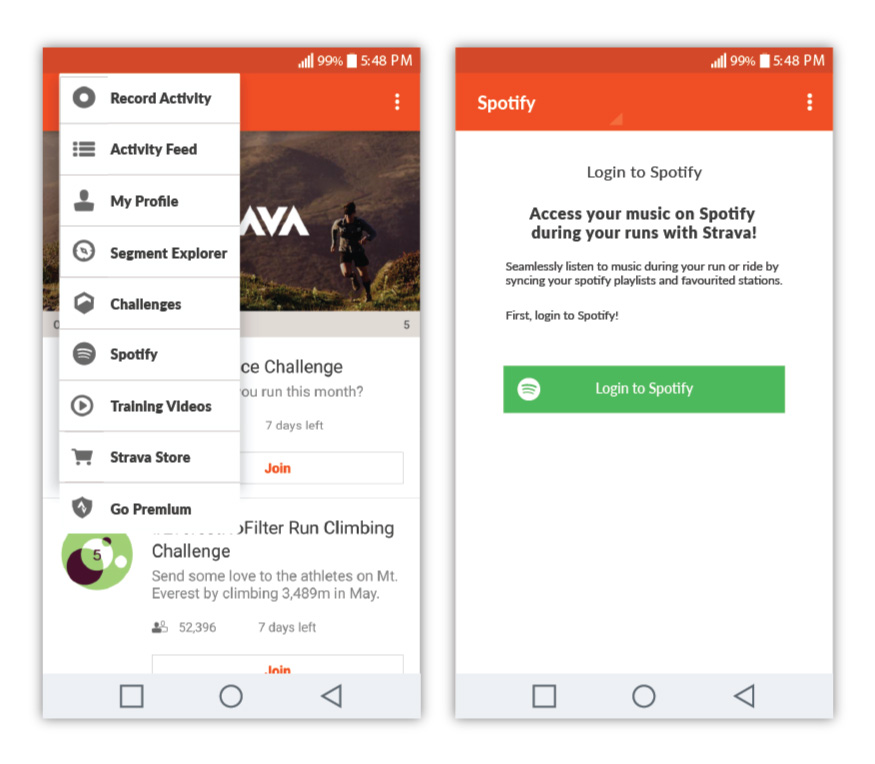
Logging into Spotify on Strava
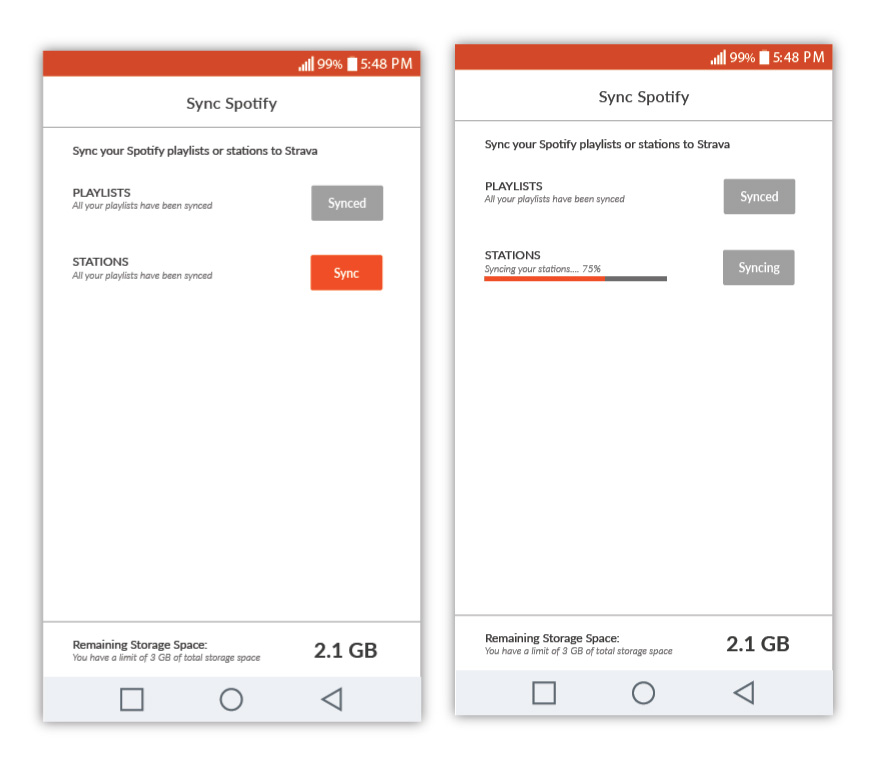
Spotify Syncing Screen
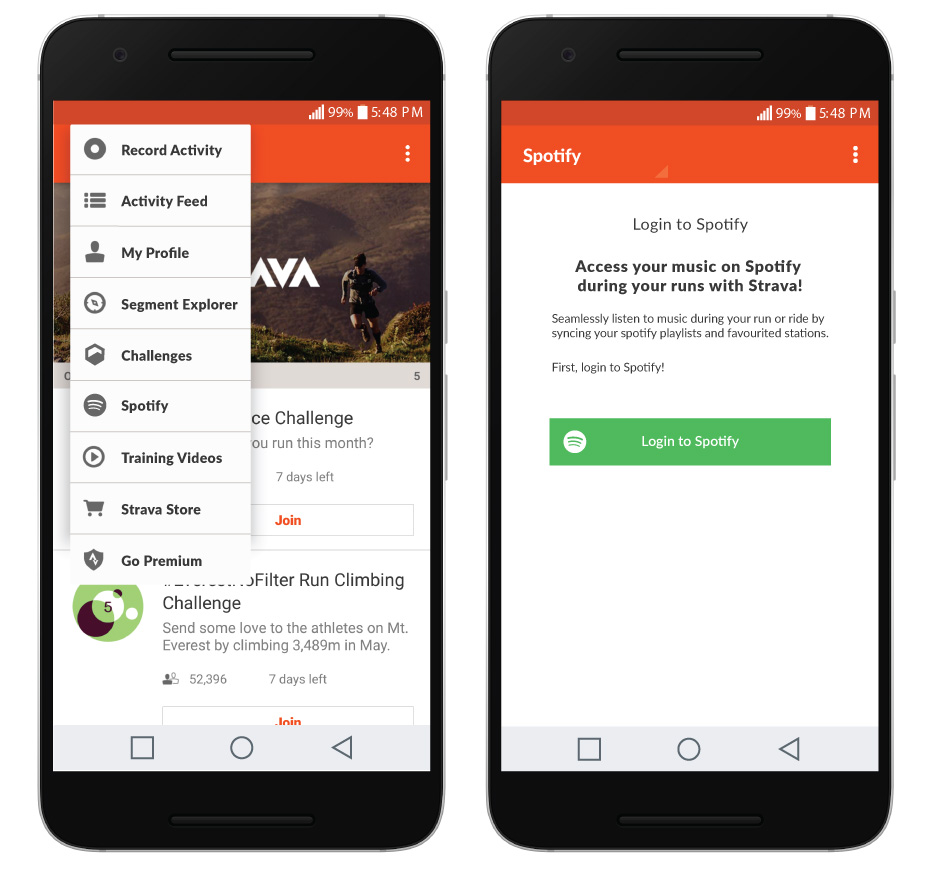
Logging into Spotify
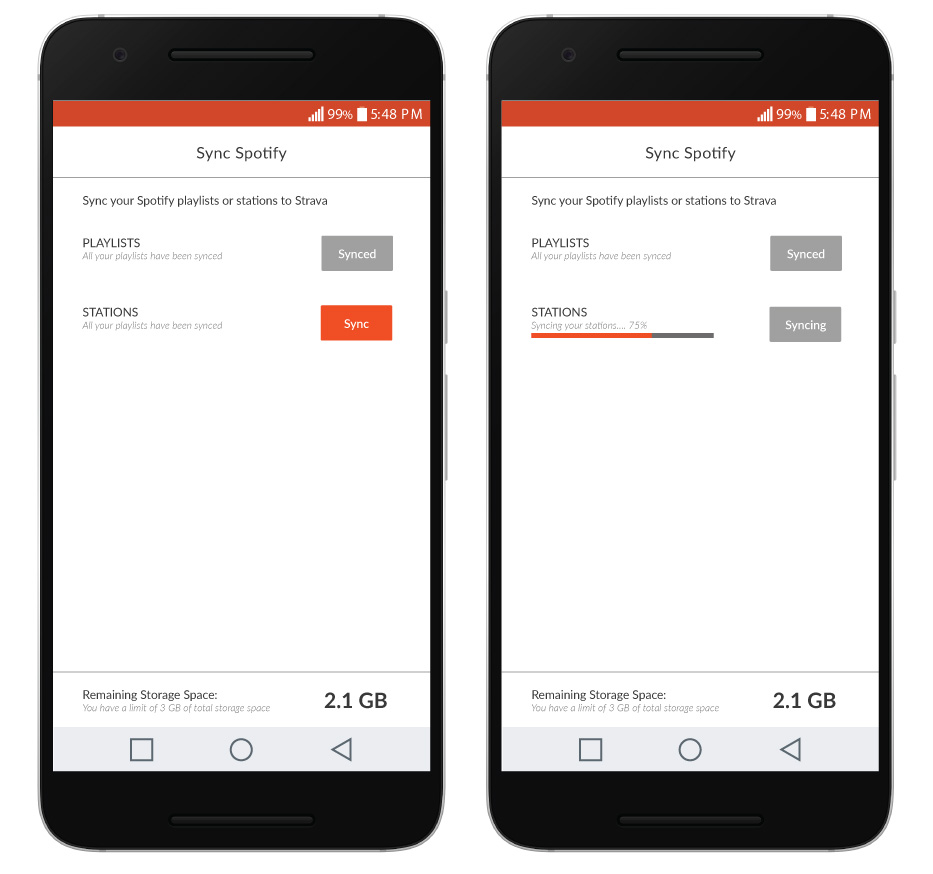
Syncing Stations / Playlists
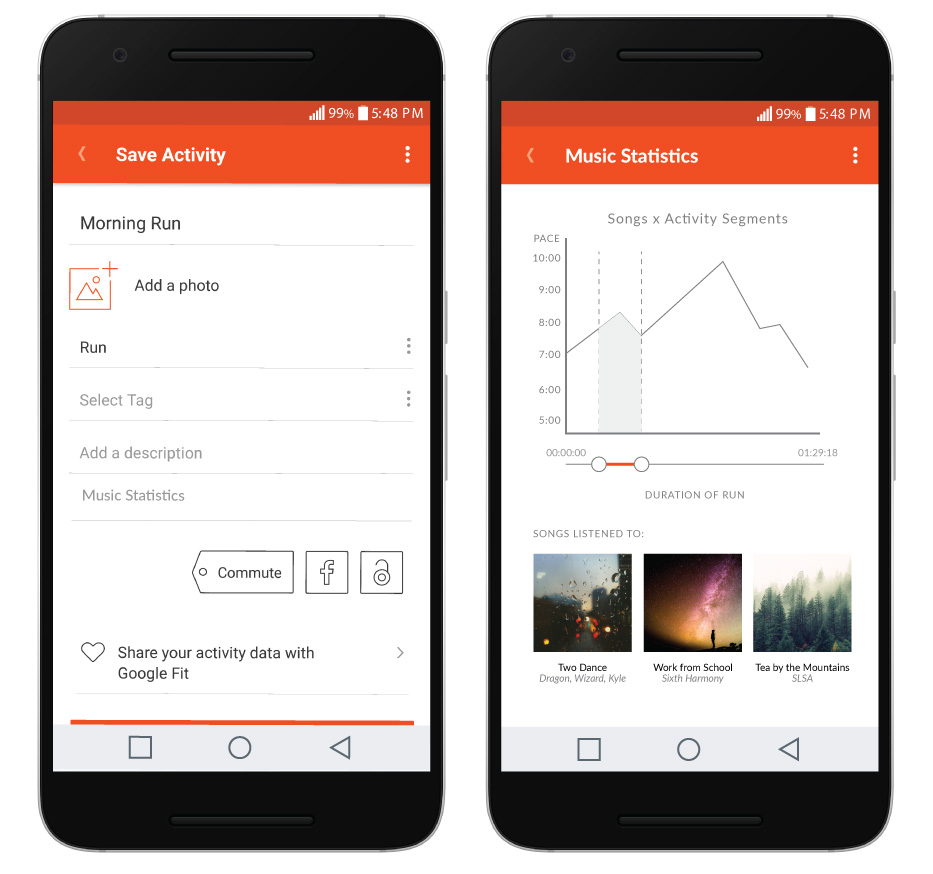
Saving an activity
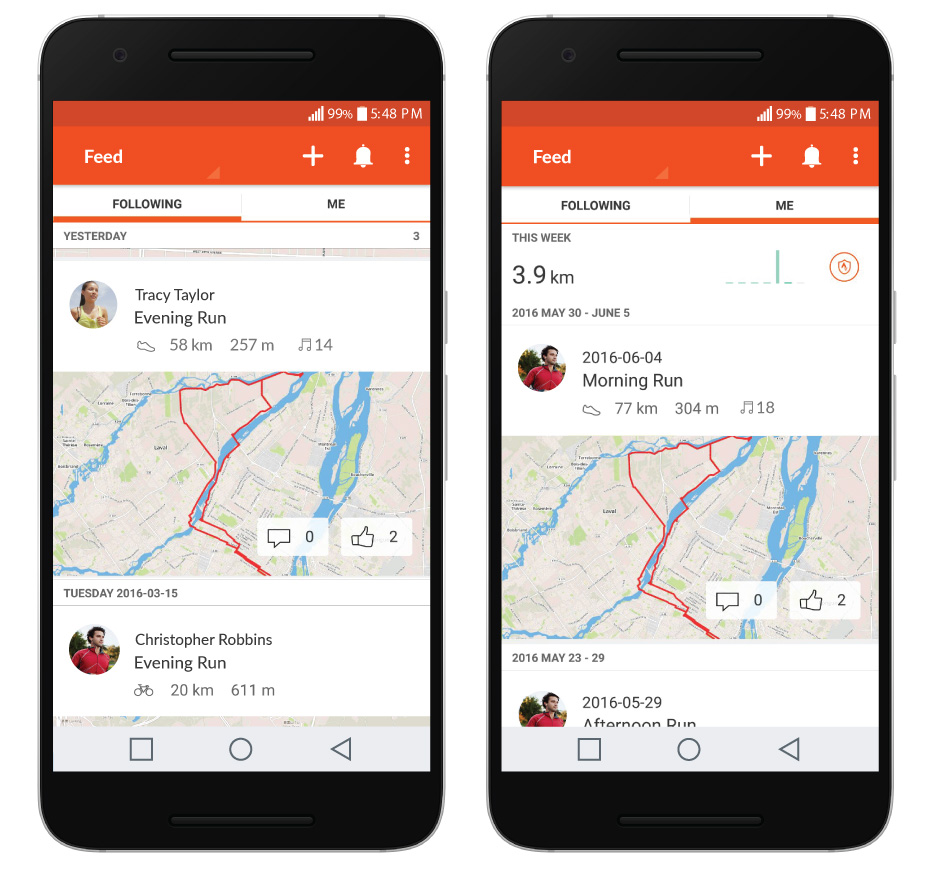
Feed with Music Implementation
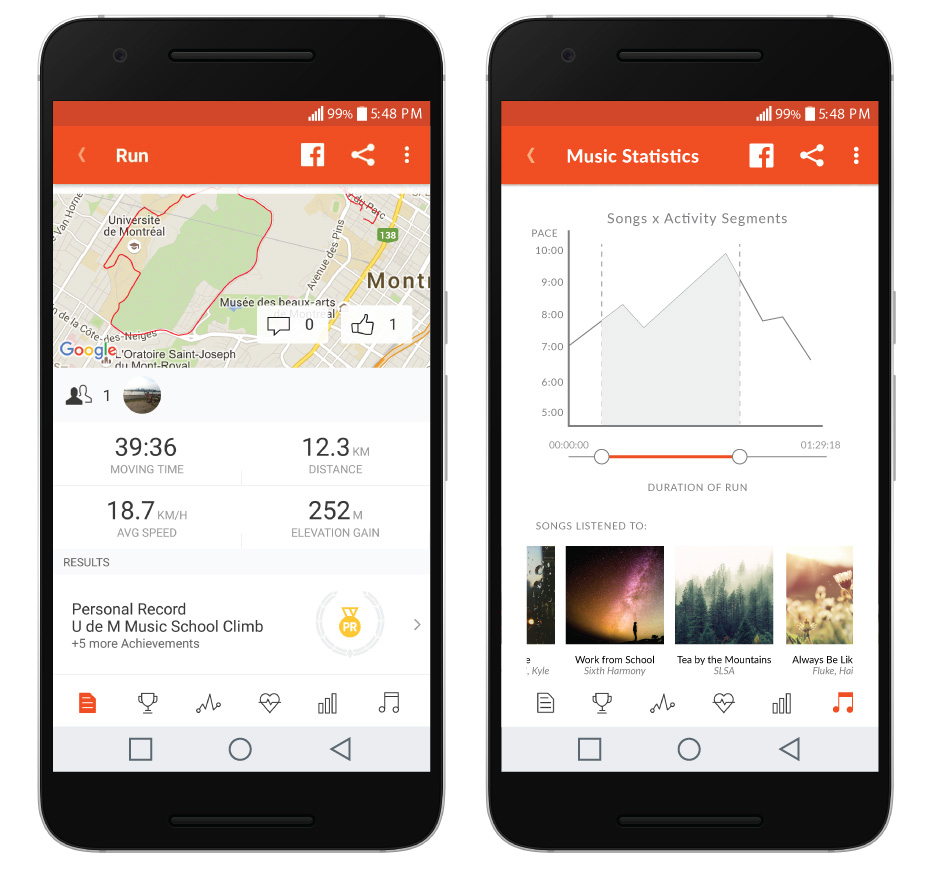
Stats about run in conjunction with Music
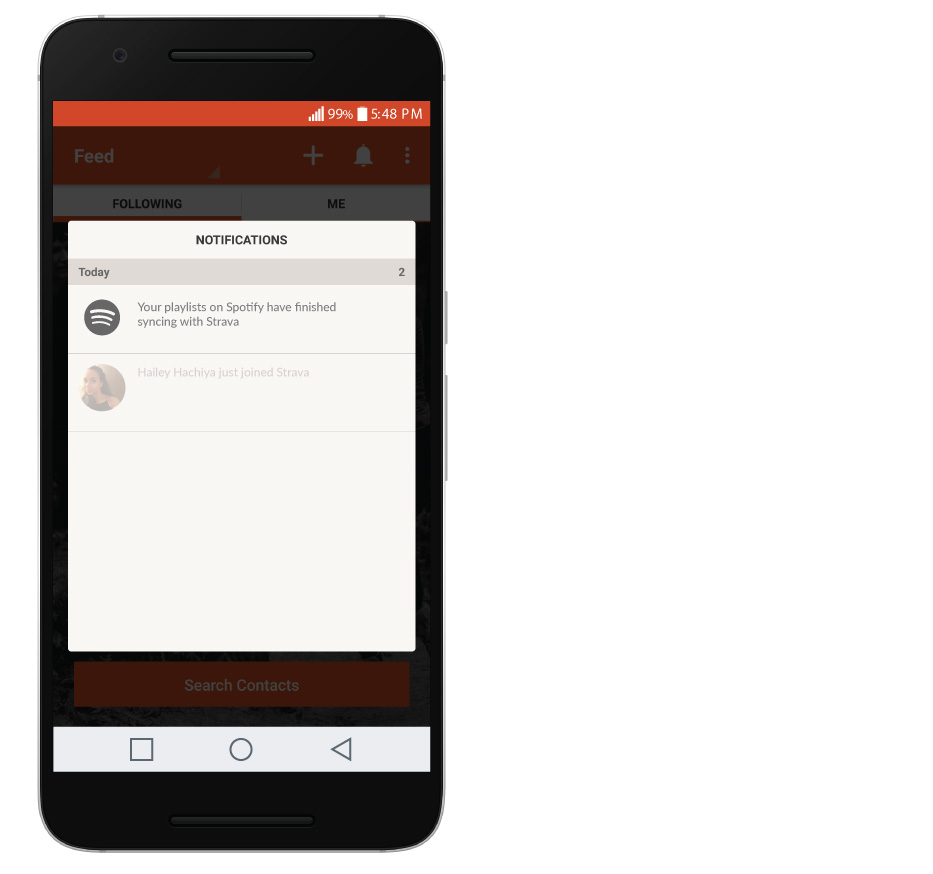
Notifications
With this collaboration, users will seamlessly listen to music during their runs and learn about the correalation between their music and the pace of their activity.
The push for Strava users to make playlists on Spotify is a good incentive for Spotify to collaborate with Strava. Strava users will be introduced to Spotify, and Spotify users can gain exposure to Strava by promoting healthy lifestyles to their customers. Strava benefits from borrowing music from Spotify, but Spotify can use data from Strava to suggest better tailored music to their users for the exercise activities. This collaboration will give exposure to the audience about the respective companies, meaning more people using both applications.
The IDEO research methods gave really good insights on Strava. Although it would have been nice to have more time to ask a larger group of people for the Extreme user survey, to gain more accurate insights and to distinguish edge cases on Strava. During the design process, being able to pull back and realize that our designs were going the wrong direction was also a great learning experience.